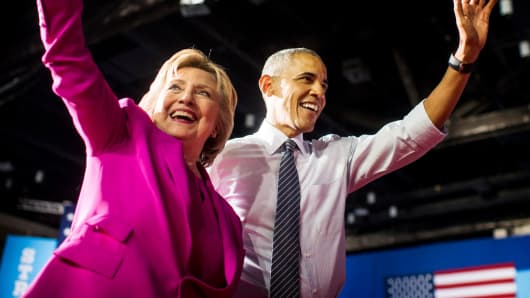Almost a Goldilocks number from the Labor Department this morning as 161,000 new jobs were created last month and the unemployment rate dropped to 4.9 percent.
The numbers have both economic and political significance. With average hourly wages climbing by 0.4 percent, recent monthly jobs gains revised upward and broader measures of unemployment falling markedly, the data clearly pave the way for Janet Yellen's Fed to raise rates in December.
Politically, the numbers may help another woman as well, as the drop in the both narrow and broad unemployment rates give Hillary Clinton some good economic news to share only days before the presidential election.
Of course, we will hear the typical hue and cry that, like other aspects of the economy, these data are "rigged," as the usual data trolls suggest that the most politically sensitive numbers, the actual unemployment rates, are probably higher than reported.
This trope is repeated with pneumatic regularity every month and during every political Administration, so why don't we just dispense with the nonsense?
Government economic numbers are compiled by career bureaucrats who serve Democrats and Republicans equally and honorably.
As for the data itself, it is encouraging. The economy, even this late in the cycle, is producing jobs at a solid, if unspectacular, pace. Wage gains are accelerating, which is as good for Main Street as the data are good for Wall Street.



